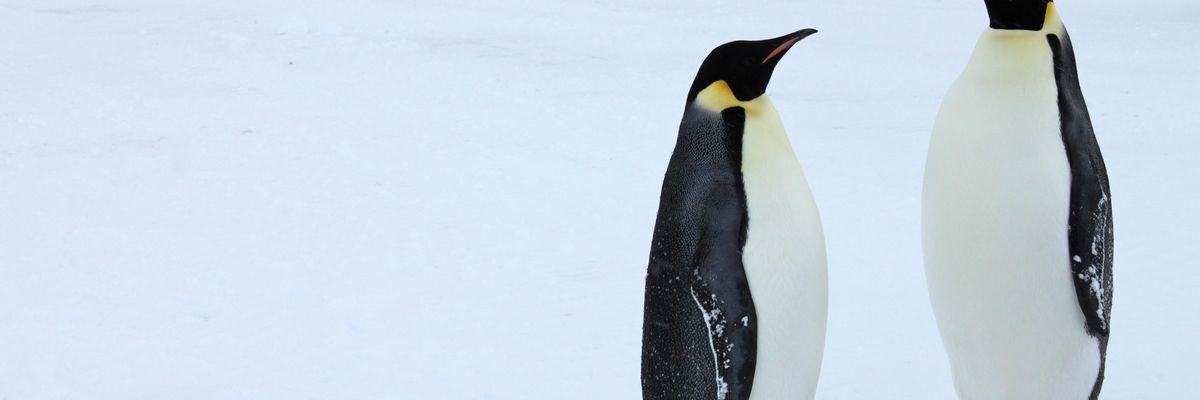More than a decade after campaigners first warned U.S. officials that the emperor penguin of Antarctica must be federally protected as the species faces threats to its habitat due to the climate crisis, the U.S. Fish and Wildlife Service on Tuesday announced that the penguin is being listed as endangered.
"It finally happened," tweeted the Center for Biological Diversity (CBD), which filed a petition in 2011 calling for the emperor penguin to be listed under the Endangered Species Act (ESA).
But while CBD's climate science director, Shaye Wolf, said the decision is "a big win for these beloved, iconic penguins and all of us who want them to thrive," the group warned that the listing should set off alarm bells for the planet.
"This decision is a warning that emperor penguins need urgent climate action if they're going to survive," said Wolf. "The penguin's very existence depends on whether our government takes strong action now to cut climate-heating fossil fuels and prevent irreversible damage to life on Earth."
An estimated 625,000-650,000 emperor penguins live in Antarctica, where they rely on sea ice to provide their habitat and breeding grounds.
As Common Dreams reported earlier this year, glaciers in Antarctica are now melting at a rate that hasn't been seen in more than 5,000 years, with fossil fuel extraction by humans and the warming planet fueling what scientists at the University of Maine called "runaway ice loss."
In recent years, the early melting of sea ice at Halley Bay and Cape Crozier resulted in the drowning deaths of thousands of penguin chicks, who were not yet able to swim when the ice began breaking up.
Melting sea ice and ocean acidification--which happens when water absorbs high volumes of the atmosphere's carbon dioxide--have also led to diminished supplies of krill, which emperor penguins rely on for sustenance.
In 2021, researchers at the CBD, the National Center for Atmospheric Research, and the British Antarctic Survey were among those who published a study showing that the emperor penguin "will be in danger of extinction throughout a significant portion of its range regardless of emission scenario" by 2050.
"According to the best available science, by 2050 their global population size will likely decrease by 26% (to approximately 185,000 breeding pairs) to 47% (to approximately 132,500 breeding pairs) under low and high carbon emissions scenarios, respectively," the USFWS said.
USFWS Director Martha Williams said the listing "reflects the growing extinction crisis and highlights the importance of the ESA and efforts to conserve species before population declines become irreversible."
CBD said the decision to list the emperor penguin as protected under the ESA will help to boost conservation funding and promote "international cooperation on saving them," but the Fish and Wildlife Service did not outline specific steps the U.S. plans to take to protect the species.
Stephanie Jenouvrier, a seabird ecologist at Woods Hole Oceanographic Institution, called the listing "an important step for raising awareness about the impact of climate change."
"Emperor penguins, like many species on Earth, face a very uncertain future, which is dependent on people working together to reduce carbon pollution," said Jenouvrier. "We should draw inspiration from the penguins themselves; only together can penguins brave the harshest climate on Earth, and only together can we face a difficult climate future."

